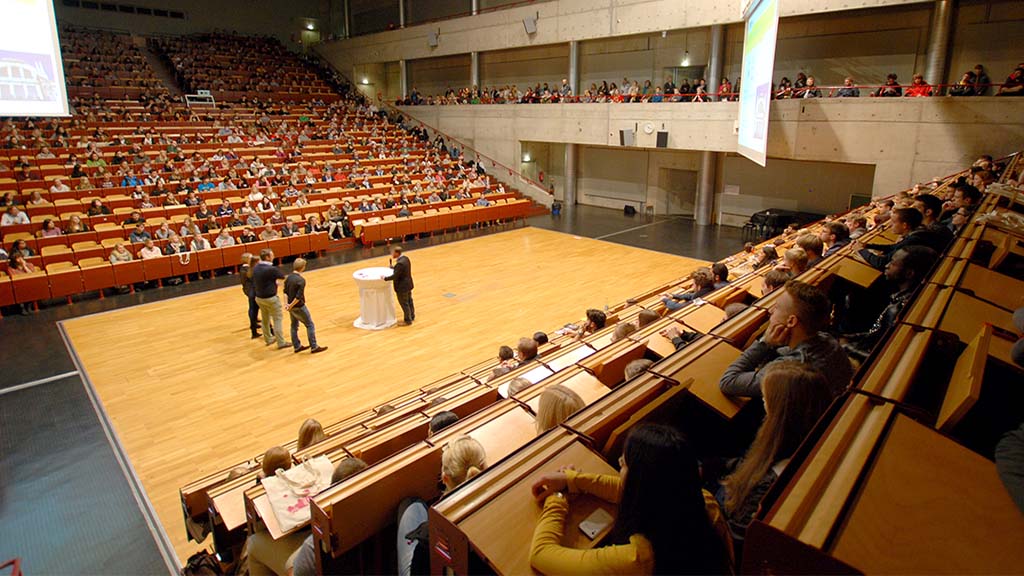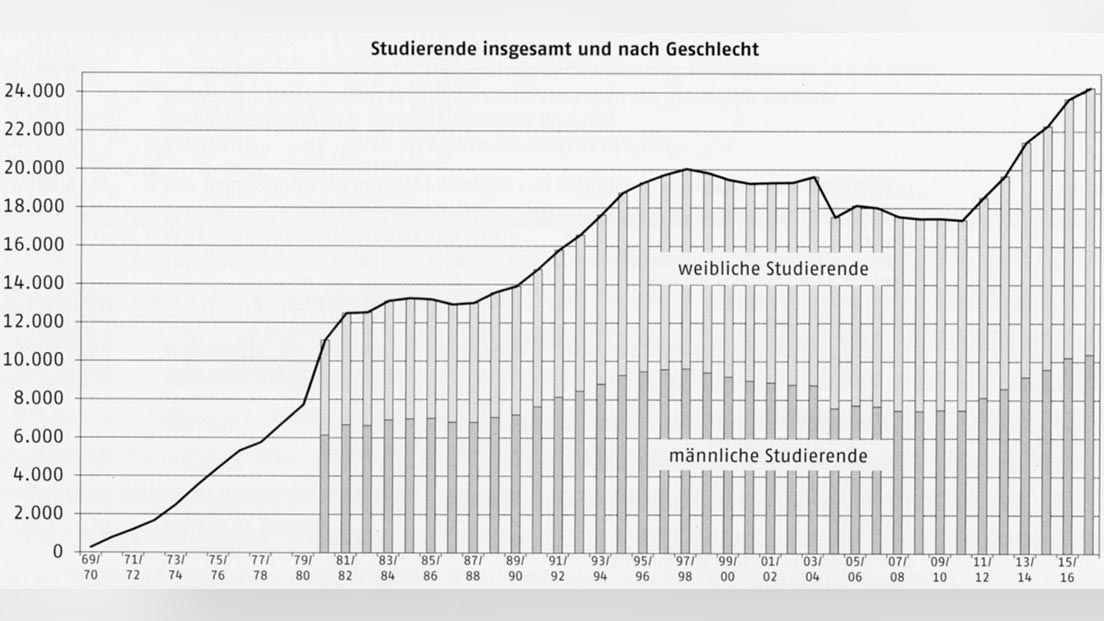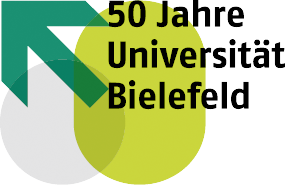
–
Photo: Norma Langohr
Source: Universität Bielefeld
Throughout NRW, around 111,000 “Erstis” (first year students) began their studies, which meant an increase of about ten per cent over the previous year. This figure, however, was lower than feared, as many school leavers deliberately postponed their studies by taking a year out to go abroad or volunteer. At Bielefeld University, the increased numbers of students were accommodated in the lecture theatres and seminar rooms of the new Building X. Some lectures were held in rented film theatres in the city centre.

–
Source: Universität Bielefeld
Development of student numbers
Plans for the “reform university” at Bielefeld originally had 3,000 students in mind. However, between 1970 and 1973 the target figures for student places in the Federal Republic of Germany had doubled, with Bielefeld University being asked to step in to relieve the pressure by accepting over 10,000 of these students. The situation in Bielefeld was exacerbated by the integration of the Pädagogische Hochschule (teacher training college) in 1980 when the number of students rose to over 10,000 for the first time. The number of professors, however, was not increased, and some positions were even cut. The idea to privilege Bielefeld as a “research university” met with unfavourable political stipulations and the opposition of other universities. Meanwhile, the number of students climbed to over 24,000. Despite this, Bielefeld University has retained its appetite for reform and its ability to implement it since its founding.

–
Source: Statistical Yearbook of Bielefeld University 2017

